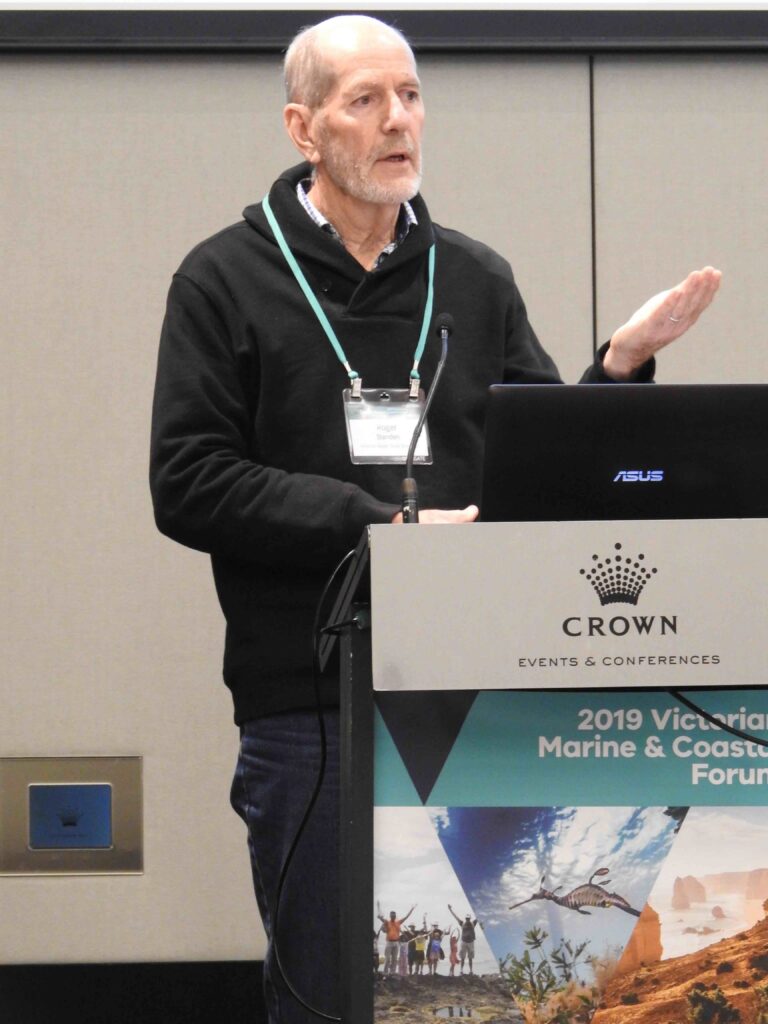VWSG presentation at the Marine and Coastal Forum, Melbourne
VWSG Chair Roger Standen presented an overview of the group’s achievements in the last forty years and how much has been discovered about the miracle of wader migration, thanks to these years of effort. Roger began by talking about how so little was known about ‘our’ waders at the start of that period. The VWSG started with just banding and then moved to the deployment of coloured leg flags. This resulted in a coordinated process across the EAAF, which has provided so much more knowledge about stopover sites.

With the introduction of engraved leg flags came information about individual birds. This led to a much greater udnerstandingabout migration schedules, time spent at stopover sites (using examples like Curlew Sandpiper H0 and Bar-tailed Godwit T0) and more about survival. In more recent years, the VWSG has moved to deploying geolocators, which has allowed the remarkable tracing of Ruddy Turnstone to their breeding grounds. This is information that was virtually impossible to obtain from sightings of leg flags as almost nobody visited these areas. Finally the group started satellite tracking, focusing on Eastern Curlew from Yallock Creek currently in China (plus being able to track one bird’s flight around a cyclone and back to its austral base).

Roger highlighted the Yellow Sea dependency impact on counts and left the audience with a stunning image (see above – courtesy of Phil Battley) of a completely emaciated godwit just arrived in NZ on its first southward migration flight. These birds endure so much just to go through their natural lifecycle, that it is beholden on all of us to make their feeding and roosting sites in Australia secure.
Jennifer Fraser, one of the Marine and Coastal Council Members, did a recap on Day 2 to all 200 delegates and highlighted the key points from Roger’s talk the previous day, reinforcing the importance of the VWSG’s (and others’) achievements.